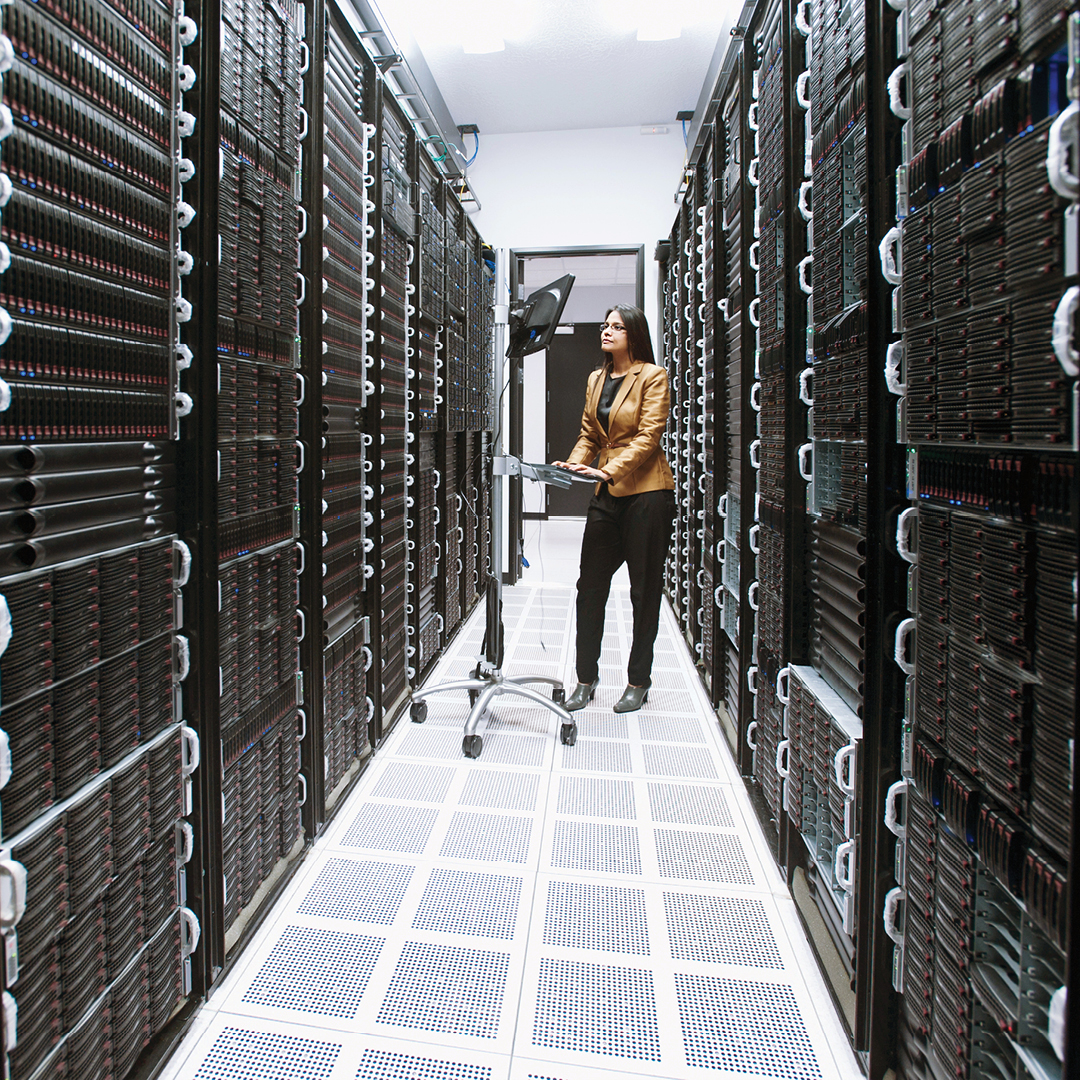Chapter 7
Data Centers
U.S. Real Estate Market Outlook 2025
5 Minute Read
Strong Demand Continues; Supply Growth Limited by Power Availability
The rapid growth in digital services, cloud computing, artificial intelligence (AI) and 5G is driving a persistent surge in demand for data center capacity. Applications on cell phones, smart devices, laptops and desktops are constantly increasing the need for processing, storing and computing data.
Despite record construction activity, the data center market will struggle to keep pace with demand, leading to higher utilization rates in existing facilities and tighter vacancy rates. The average vacancy rate for primary markets fell to a record-low 2.8% and the average preleasing rate of new construction hit a record high in 2024. We expect these conditions will persist in 2025, with the average preleasing rate rising to 90% or more and rental rates rivaling the record highs of 2011-2012.
There will be increased competition for land and resources to build new data centers, particularly in primary markets. Northern Virginia, Silicon Valley, Dallas-Ft. Worth, Atlanta and Chicago are all seeing more data center development outside of central business districts and urban core areas. As a result, rezoning and entitlements will be required in these areas.

More data center expansions in secondary and emerging markets are expected to alleviate reliance on major hubs. Tax incentives will be very important for new development in states that have not had notable supply growth.
Site selection remains focused on power availability and fuel mix. We expect legacy nuclear partnerships providing colocation opportunities for data centers to continue, as well as unique opportunities for retired coal plants to convert to renewable energy with interconnection already in place.
Figure 17: Preleasing Rate of Under-Construction Data Centers in Primary Markets
Under-Construction Boom
Under-construction data centers are expected to reach record highs in 2025. Demand for modern data center facilities continues to soar, as hyperscalers and enterprises plan to expand their digital infrastructure. The sheer scale of data center development in 2025 will result in a 100+ megawatt (MW) project being the new norm.
A growing number of projects remain in the under-construction phase for extended periods due to significant power shortages. As power supply struggles to keep up with the rapid pace of new development, many construction projects are being delayed until power infrastructure is either upgraded or increased. This backlog will create more competition for the limited power resources in high-demand areas.
Expect extended timelines for new data center builds, particularly in regions where power infrastructure is lagging behind the surge in construction. Silicon Valley and Hillsboro, OR are seeing longer timelines for power availability commitments.
Shortages of construction workers will drive local community colleges and technical schools to increase their number of mechanical, electrical and plumbing certifications and degrees. Without adequate skilled labor, data center construction timelines will not improve.
The pressure to secure power will lead to more innovative solutions, such as on-site power generation (e.g., microgrids or partnerships with energy companies) and power-sharing agreements with local utilities.
Figure 18: Under-Construction Totals in Primary Markets
Energy Transition: Shift to Nuclear Power
Data centers account for a significant share of energy consumption, creating a need for new energy solutions. The increasing demand for power provides both challenges and opportunities for renewable energy production. We expect that legacy coal plants with adequate topology, fiber and access will eventually transition to non-fossil-fuel power generation.
Two major data center operators recently announced plans to utilize power generated by the Susquehanna and Three Mile Island nuclear power plants in Pennsylvania, setting the stage for a large-scale revival of nuclear power generation in the U.S. Driven by low carbon emissions and baseload reliability, nuclear is front and center with major developers for a power supply solution. As a result, we expect to see more companies exploring nuclear energy development—both large-scale and small reactors—as a viable carbon-free alternative to traditional energy sources.
Energy costs for data centers could stabilize as nuclear power provides a more predictable and sustainable energy source than traditional fossil fuels. Environmental concerns and regulations may expedite the adoption of nuclear technologies, especially in markets looking to meet aggressive carbon reduction goals.
Partnerships between energy providers, nuclear technology companies and data center operators will become more common as the industry shifts toward reliable green power.

Contacts
Related Service
- Property Type
Data Center Solutions
Optimize your data center real estate with worldwide consulting, advisory and transaction, project management an...
Related Insights
Insights in Your Inbox
Stay up to date on relevant trends and the latest research.



